You can map out your polygons and figure out which one was selected by adding a MouseListener. Next time you redraw, you can show the selection.
You can check if the event's point is contained within a polygon using:
[Java Docs] :: java.awt.Polygon.contains(Point)
Here is an example:
import java.awt.*;
import java.awt.event.*;
import java.awt.image.BufferedImage;
import java.io.*;
import java.util.*;
import java.util.List;
import javax.imageio.ImageIO;
import javax.swing.*;
public class PolygonDetectorPanel extends JPanel implements MouseListener {
private static final long serialVersionUID = -8929816396666863908L;
private BufferedImage backgroundImage;
private List<Polygon> shapes;
private Polygon selectedPoly;
public static void main(String[] args) {
SwingUtilities.invokeLater(new Runnable() {
public void run() {
JFrame frame = new JFrame("Polygon Detector");
PolygonDetectorPanel panel = new PolygonDetectorPanel();
frame.setContentPane(panel);
frame.setDefaultCloseOperation(JFrame.EXIT_ON_CLOSE);
frame.pack();
frame.setLocationRelativeTo(null);
frame.setVisible(true);
}
});
}
public PolygonDetectorPanel() {
super();
initialize();
this.addMouseListener(this);
}
protected void initialize() {
try {
InputStream is = PolygonDetectorPanel.class.getClassLoader().getResourceAsStream("resources/buttons.png");
this.backgroundImage = ImageIO.read(is);
} catch (IOException e) {
e.printStackTrace();
}
int width = this.backgroundImage.getWidth();
int height = this.backgroundImage.getHeight();
this.setPreferredSize(new Dimension(width, height));
this.shapes = new ArrayList<Polygon>();
int buttonStartX = 13;
int buttonStartY = 54;
int buttonOffset = 100;
for (int i = 0; i < 4; i++) {
int[] w = { buttonStartX , buttonStartY + 33 + (i * buttonOffset) };
int[] nw = { buttonStartX + 50 , buttonStartY + (i * buttonOffset) };
int[] ne = { buttonStartX + 300 , buttonStartY + (i * buttonOffset) };
int[] e = { buttonStartX + 350 , buttonStartY + 33 + (i * buttonOffset) };
int[] se = { buttonStartX + 300 , buttonStartY + 66 + (i * buttonOffset) };
int[] sw = { buttonStartX + 50 , buttonStartY + 66 + (i * buttonOffset) };
int[] xPoints = { w[0], nw[0], ne[0], e[0], se[0], sw[0], w[0]};
int[] yPoints = { w[1], nw[1], ne[1], e[1], se[1], sw[1], w[1]};
this.shapes.add(new Polygon(xPoints, yPoints, 6));
}
}
@Override
protected void paintComponent(Graphics g) {
super.paintComponent(g);
if (this.backgroundImage != null) {
g.drawImage(this.backgroundImage, 0, 0, null);
}
Graphics2D g2 = (Graphics2D) g;
g2.setStroke(new BasicStroke(5, BasicStroke.CAP_ROUND, BasicStroke.JOIN_ROUND, 10.0f));
for (Polygon poly : this.shapes) {
if (poly == this.selectedPoly) {
g.setColor(Color.GREEN);
} else {
g.setColor(Color.RED);
}
g.drawPolygon(poly);
}
}
protected Polygon getClickedShape(Point point) {
for (Polygon poly : this.shapes) {
if (poly.contains(point)) {
return poly;
}
}
return null;
}
@Override
public void mouseClicked(MouseEvent e) {
Polygon poly = getClickedShape(new Point(e.getX(), e.getY()));
if (poly != null) {
this.selectedPoly = poly;
} else {
this.selectedPoly = null;
}
repaint();
}
@Override
public void mousePressed(MouseEvent e) { }
@Override
public void mouseReleased(MouseEvent e) { }
@Override
public void mouseEntered(MouseEvent e) { }
@Override
public void mouseExited(MouseEvent e) { }
}
Here is a screenshot.

